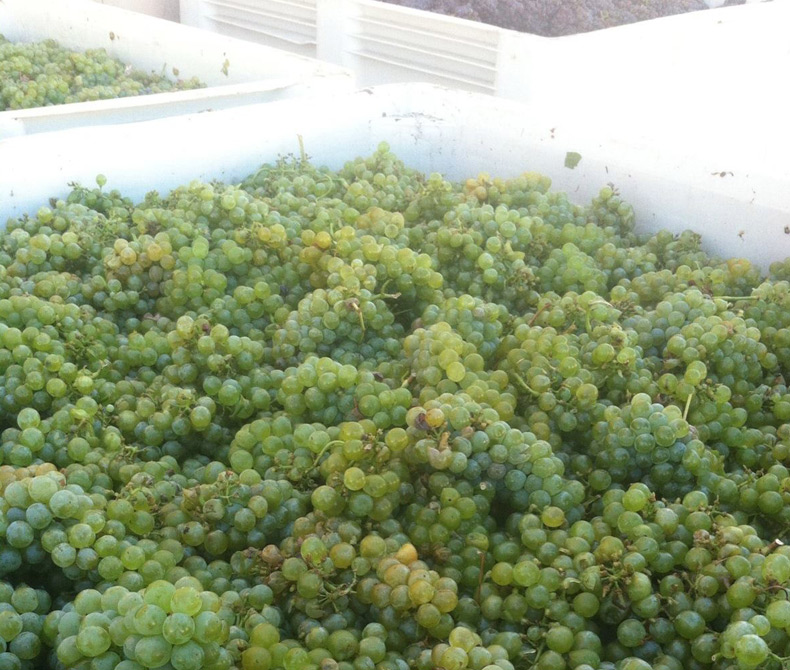Grape Harvest 2014 Continued

Harvesting table grapes is largely determined by the fruit becoming sweet and juicy, with consumption coming relatively soon thereafter. But I am not picking table. I am harvesting for wine, and must visualize how the process of fermentation will convert the grape, from that moment of harvest, into a delicious and stable product for future consumption. And, of course, to achieve the styles for which this winery has become known.
Many winemakers consider sugar the most important criteria for determining ripeness. Indeed, most grape contracts list sugar as the principle standard for judging the acceptability of the fruit. The Annual Grape Crush Report published by the USDA lists sugar as the only component of grape chemistry, probably due to the vast majority of wines being produced from grapes harvested for sugar content alone. In the manufacture of mass-produced wines, taste, texture, aroma, and alcohol are adjusted with chemicals prior to bottling. This explains why most supermarket wines might not be offensive, but they rarely excite.
Truly memorable wines are crafted from grapes harvested for more than their sugar content. For craft winemakers, the natural grape acids are often a more important harvest criterion, as the acids balance contrasting elements of sweetness and bitterness in the wine. Skin ripeness is another factor, as the skins are responsible for the flavors, color, and tannin imparted to the finished wine. Seeds and stems are important as well, for green seeds and stems can introduce hard and under ripe tannins into the wine.
In a “perfect” vintage year, the winemaker is blessed with the simultaneous ripening of all of the constituents of the berry and vine. Contrary to popular opinion, these vintage years are rare, even in California. In most years, craft winemakers earn their pay by focusing on essential elements of ripeness for their style of wine. Compromise, based on experience, is the rule. Vintage, integral to terroir, leaves its stamp on the wine. This is the charm of craft wines.


